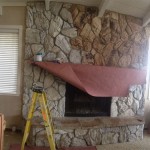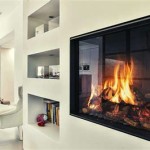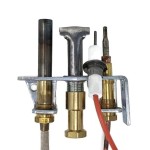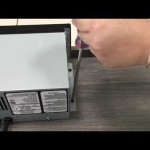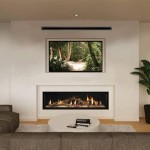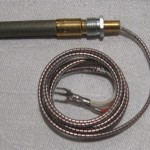Fireplace Heat Exchanger Blowers: Enhancing Fireplace Efficiency and Heat Distribution
Fireplaces are often regarded as a comforting and aesthetically pleasing addition to a home, offering warmth and ambiance. However, traditional fireplaces can be quite inefficient, with a significant portion of the generated heat escaping up the chimney. Fireplace heat exchanger blowers aim to address this inefficiency by improving heat capture and distribution throughout the living space.
A fireplace heat exchanger blower, also known as a fireplace fan or fireplace grate blower, is a device designed to circulate heated air from a fireplace into the surrounding room. By forcibly moving air around and through the firebox, these blowers can dramatically increase the amount of heat that is radiated into the room, rather than being lost through the chimney flue.
The basic principle behind a fireplace heat exchanger blower revolves around convection. Warm air naturally rises, and cooler air descends. A traditional fireplace relies on this natural convection to circulate heated air. However, this process is often slow and inefficient, leading to uneven heating and significant heat loss. The blower enhances this process by actively forcing air to circulate, thereby increasing the rate of heat transfer.
These blowers typically consist of a fan or blower motor, a housing, and sometimes a thermostat. The housing is designed to be placed either within the firebox itself or underneath the fireplace. When the fireplace is in use and the firebox reaches a pre-determined temperature (if equipped with a thermostat), the blower activates, drawing cool air from the room in, passing it over the hot surfaces of the firebox or grate, and then expelling the heated air back into the room.
There are several different types of fireplace heat exchanger blowers available, each with its own advantages and disadvantages. Understanding these differences is crucial for selecting the appropriate blower for a particular fireplace and heating needs.
Types of Fireplace Heat Exchanger Blowers
Fireplace heat exchanger blowers can be categorized based on their placement, design, and method of operation. The most common types include grate blowers, firebox blowers, and hearth-mounted blowers.
Grate Blowers: These blowers are integrated into the design of the fireplace grate itself. They typically consist of a series of tubes or channels running through the grate, with a fan or blower located underneath. The fan draws cool air through the tubes, where it is heated by the fire and then expelled into the room. Grate blowers are often easy to install, as they simply replace the existing grate. However, their effectiveness can be limited by the size and design of the grate, and they may not be suitable for all fireplaces.
Firebox Blowers: These blowers are designed to be installed directly within the firebox itself, often at the back or sides. They typically consist of a fan and a housing, and they may require some modification to the fireplace to install. Firebox blowers are generally more powerful than grate blowers and can circulate a larger volume of air. They are particularly effective at extracting heat from the firebox and distributing it throughout the room. However, installation can be more complex, and it's crucial to select a blower that is rated for the high temperatures within a firebox.
Hearth-Mounted Blowers: These blowers are positioned on the hearth, typically beneath the fireplace opening. They draw cool air from the floor level and direct it upwards and into the firebox opening. Hearth-mounted blowers are relatively easy to install and don't require any modification to the fireplace itself. They are generally less powerful than firebox blowers, but they can still improve heat circulation, especially in smaller rooms. The aesthetic appearance of the hearth-mounted blower is an important consideration, as it is visible in the room.
The selection of which type of blower depends on the fire place setup (built-in type, free-standing, insert type) and whether alterations to the fireplace are allowed or desired.
Benefits of Using a Fireplace Heat Exchanger Blower
The primary benefit of using a fireplace heat exchanger blower is increased heating efficiency. By circulating more heated air into the room, the blower reduces the amount of heat that is lost up the chimney. This can result in significant energy savings, particularly for those who use their fireplace as a primary source of heat. It also allows for a more even level of heat distribution across the room. Without a blower, the area directly in front of the fireplace tends to be much warmer than the rest of the room.
Another benefit of using a fireplace heat exchanger blower is improved comfort. By circulating heated air more effectively, the blower can create a more comfortable and consistent temperature throughout the room. This can be particularly beneficial in larger rooms or homes with poor insulation.
Furthermore, some models offer features like adjustable speed settings and thermostatic controls. Adjustable speed settings allow users to customize the airflow to their specific needs, while thermostatic controls automatically turn the blower on and off based on the temperature of the firebox, optimizing efficiency and preventing overheating. Fireplace blowers that are thermostatically controlled often prolong the heating life of the fireplace itself because it prevents the unit from overheating and prematurely decreasing the lifespan of the unit.
Finally, the use of a fireplace blower decreases the need for other heating solutions in the home, less energy consumption, and overall lower bills. This is one of the primary reasons why end-users seek to install a fireplace blower in the first place.
Factors to Consider When Choosing a Fireplace Heat Exchanger Blower
Selecting the right fireplace heat exchanger blower involves considering several factors, including the size of the fireplace, the size of the room, the type of blower and construction materials, and the desired features.
Fireplace Size and Room Size: The size of the fireplace and the room are important factors to consider when choosing a blower. A larger fireplace will require a more powerful blower to effectively circulate the heated air. Similarly, a larger room will require a blower with a higher CFM (cubic feet per minute) rating to ensure adequate heat distribution. The CFM rating indicates the volume of air that the blower can move per minute, and a higher CFM rating generally indicates a more powerful blower. A smaller fireplace in a small room would not need a blower, and a larger fireplace in a very large room may need to have additional strategies to move heat around the room in addition to a fireplace blower.
Blower Type and Construction: As discussed earlier, there are several different types of fireplace heat exchanger blowers available, each with its own advantages and disadvantages. It's important to choose a blower that is appropriate for the specific fireplace and heating needs. For example, a grate blower may be suitable for a smaller fireplace, while a firebox blower may be necessary for a larger fireplace. The blower's construction materials also play a key role. The blower must be capable of withstanding the high temperatures present in the fireplace and must not be constructed of flammable materials. A blower made of high-grade steel and heavy-duty components are important to look for in a fireplace blower.
Features and Noise Level: Consider the desired features, such as adjustable speed settings, thermostatic controls, and remote control operation. Adjustable speed settings allow users to customize the airflow to their specific needs, while thermostatic controls automatically turn the blower on and off based on the temperature of the firebox. The noise level of the blower is also an important consideration. Some blowers can be quite noisy, which can be distracting or annoying. Look for blowers that are designed for quiet operation, or consider installing sound-dampening materials around the blower.
In addition, consider the power requirements of any blower you add to your fireplace. Some blowers may require professional installation if they draw significant power, or if a separate circuit for them is necessary. You should also consult a professional if you are unsure which blower type would best fit your needs. Proper installation will ensure long-term reliability of the unit and provide peace of mind.
Fireplace heat exchanger blowers require regular maintenance to ensure optimal performance and longevity. Dust and debris can accumulate on the fan blades and motor, reducing airflow and potentially causing the blower to overheat. It is recommended to clean the blower regularly, typically at least once a year, using a vacuum cleaner or compressed air. Refer to the manufacturer's instructions for specific cleaning recommendations.
In conclusion, fireplace heat exchanger blowers can significantly improve the efficiency and heat distribution of a fireplace. By understanding the different types of blowers, considering key factors when choosing a blower, and performing regular maintenance, homeowners can maximize the benefits of their fireplace and enjoy a warmer, more comfortable home.

Grate Heater Wikipedia

Medium Double Row Tube Fireplace Grate Heater With Dual Blowers Hastyheat

Spitfire Tube Fireplace Heaters Heater Blower Heating And Plumbing

Fire Place Heat Exchanger Fireplace Blower

Size 45 Airculator Wood Burning Fireplace Heat Exchanger

An Ultimate Guide To Fireplace Heat Exchanger Meaning Installation

Spitfire Fireplace Heater With 6 Tubes And 2 Sd Blower

Choose A Fireplace Grate Heater From The 3 Top Ing For 2024
Masonry Fireplace Heat Exchanger Hearth Com Forums Home

Make Your Fireplace More Efficient Diy Heat Exchanger
Related Posts

